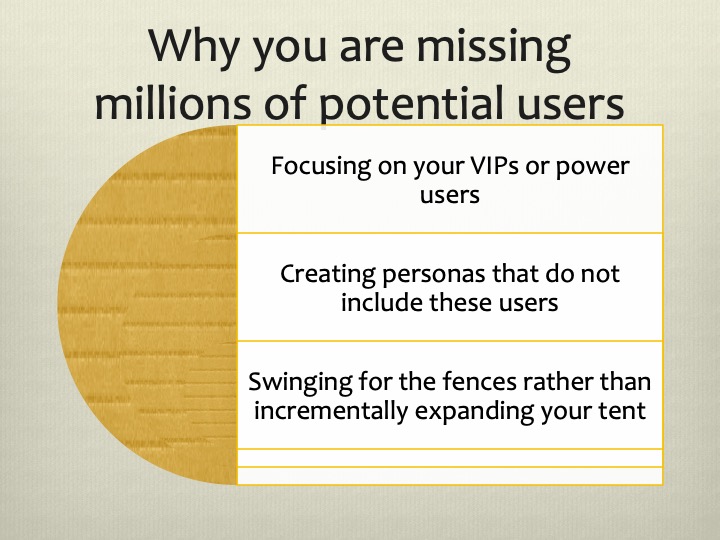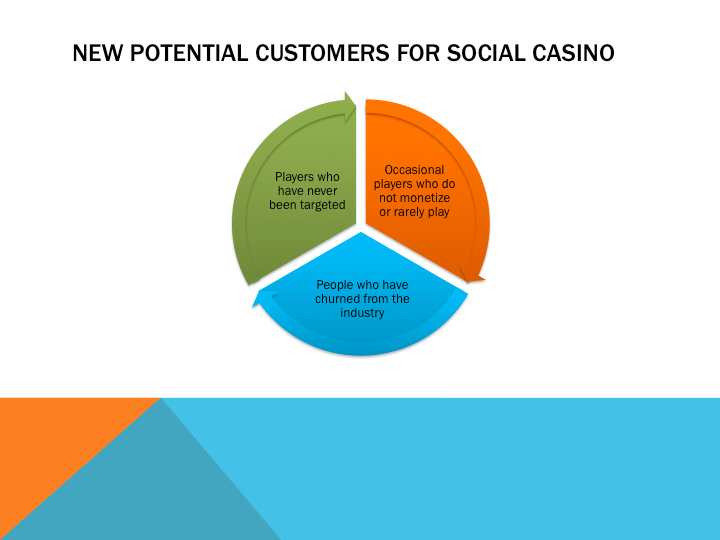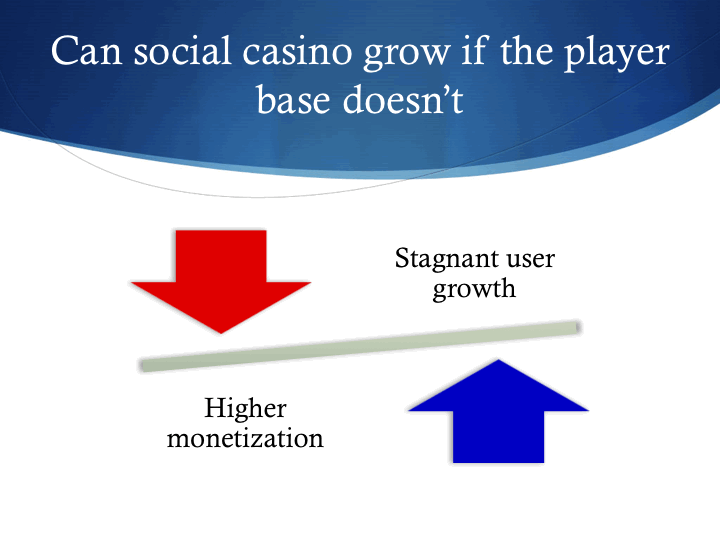We are all constantly looking at ways to grow our game or app like Facebook or Twitter or Fortnite, so where better to start looking than Instagram. An article by Bengaly Kaba, The Adjacent User Theory, shows the methodology he used at Instagram to reignite its mega-growth. Kaba joined Instragram in 2016 and was instrumental in helping it grow from about 400 million users to over 1 billion.
Kaba credits his success to Adjacent User Theory, where potential users (adjacent users) are aware of the product, maybe tried it, but are not engaged customers. The app’s positioning or too many barriers in the early user experience often drive the lack of traction with these customers. In Kaba’s situation, the 400 million active users of Instagram represented instances where they found product-market fit but also missed over 600 million potential customers who either did not understand Instagram or how it would fit into their lives. According to Kaba, “our insight was that it is critical for growth teams to be continually defining who the adjacent user is, to understand why they are struggling, to build empathy for the adjacent user, and ultimately to solve their problems.”
Solving for the adjacent user
If you have a successful game or product, you almost certainly have a good understanding of your customers (or else you would not be successful). Essentially by definition, you do not have the same understanding of adjacent or future users, or else they would already be customers. Also, your future audience evolves over time, so what adjacent users are not getting now from your game might be different from what keeps your product appealing outside its core in six or twelve months.
To solve for the adjacent users, either your product team or a satellite of your product team needs to focus on these potential customers. Kaba writes, “[w]ithout a team dedicated to understanding, advocating, and building for your next set of users, you end up never expanding your audience. This stalls growth, and the product never reaches the level you aspire it to…. You can think about your product as a series of circles. Each of these circles is defined by the primary user states that someone could be in. For example Power, Core, Casual, Signed Up, Visitor. Each one of these circles have users that are “in orbit” around it. These users have an equal or greater chance they drift off into space rather than crossing the threshold to the next state. There is something preventing them from getting over the hump and transitioning into the next state. These are your adjacent users and the goal is to identify who they are and understand their reasons struggling to adopt. As you solve for them, you push the edge of the circle out to capture more of that audience and grow.”
Slack represents a good example of the power of adjacent users, according to Kaba. Slack has five user states — not signed up, signed up, casual, core free and monetized — and will lose potential customers at the transition between each of these five states. By understanding why people drop off between states before becoming monetized, Slack can make product changes that moves these adjacent users from non-customers to engaged customers.
Why companies are not focusing on adjacent users
While it seems obvious that converting adjacent users is critical for growth, many companies miss this opportunity. Kaba identifies three reasons for this problem
- Focusing on power users. It is natural to focus your development efforts on your VIPs, especially in gaming where a very small percent of your players drive most of the revenue. Thus, product development is geared to giving these players more of what they want, rather than bringing more customers into the tent.
- Personas. Many companies build personas (a fictional character created to represent a player type that might use a game) to determine who they are solving for. The mistake with this approach is that personas are usually created based on existing players, do not change as customers evolve, not based on relative usage/contribution and are too broad to be actionable.
- The home run swing. Product teams often look for the bold beat feature that will have a dramatic impact rather than a series of changes. Kaba writes, “they get bogged down by trying to establish product-market fit for a new set of users and never fulfill the potential of their current product-market fit.”

How to solve for adjacent users
There are several ways to mitigate the above issues and appeal to adjacent users. To overcome the bias of VIPs, product teams need to cross a “cognitive threshold” and understand the experience of non-VIP customers as well as non-customers. This includes your team putting aside their personal biases if they are using the product, they are not building it for themselves but building for adjacent users.
To avoid having your product team focus on the huge wins, Kaba writes that they must “[r]emember…adjacent users are the users who are struggling to adopt your product today. Non-adjacent users could literally be everyone else in the entire world. Sure, non-adjacent users might be a larger market, but the barriers to their adoption are also dramatically higher. Companies that try to go too big too soon and often, skip the next obvious steps and fail to solve their current adoption problems.”
Identifying and defining your adjacent users
Once you understand the value of adjacent users and how to build for them, you need to find them. You need to look at cohort decay, keeping in mind the different circles or user states for your game. You need to look at these variables (ie. registering to purchasing) and identify the decline in each cohort. That declines represents the adjacent users.
You then need to build a theory on who they are and why they are struggling or not converting. You also need to realize you will not have perfect visibility into the answer. Kaba describes the process, “is to lay out multiple hypotheses of who the adjacent users are, choose which one to focus on strategically, force your team to look at the product through their lens, experiment and talk to customers to validate and learn, then update the landscape to make your next choice. I like to think about it as a snowball. You know very little at first, but as the snowball turns you collect more information about the adjacent user, which helps you collect more snow (users).”
It is also important to gain a deep understanding of your current users. If you find that your current users are predominantly, male, 35-50 years old and from the northeast in the US, you can then look at each of these attributes to find adjacent users. For example, maybe you are losing women. Maybe you are not appealing to 50+. Maybe users from the Midwest are not connecting.
Once you have hypothesis on your current users you can create multiple hypothesis of adjacent users. Kaba recommends, “starting with a bottoms-up analysis of your data. You do not need to spend weeks talking to users to get a sense for who your adjacent user is. Look at what is happening on the edges of these states in the data. The data will help you identify places in the product that people are dropping off. This is the starting point to help you develop hypotheses about why different segments of users are dropping off.”
Understand the why
Once you have identified your adjacent users, you need to understand why they are dropping off. To achieve this knowledge, your product team needs to empathize with the adjacent users. This is usually a challenge as they often think like your VIPs and current users and find it difficult to put themselves in the heads of people who do not like their game or product. There are three ways, though, to overcome this problem:
- Be the adjacent user. Your product team needs to be experiencing your game in the conditions and settings that the adjacent user is experiencing. Some examples are new user flows, empty states, and product states that require different levels of play.
- Watch the adjacent user. This is done by usability testing. It is best to do this in the adjacent users environment, as focus groups and in-office usage creates artificial conditions.
- Talk to the adjacent user. Once you have identified adjacent users, ask them why they are trying to use your product, what jobs they are trying to solve, and what other games they play or have tried.
Prioritizing adjacent users
Once you understand your adjacent users and have identified what they need from your game or product, you need to prioritize. You cannot solve all of their issues at once, instead you need to focus on creating the most long-term value for your company. You want to do it in the correct order or sequence so that your efforts build on each other.
First, the adjacent users you should approach are ones different on only one or two attributes. You will only have to make limited changes or additions to your product to appeal to them.
Second, they should align with your strategy. Will the changes you have to make to appeal to this segment help you achieve your long-term strategy and vision for the product. You cannot please everybody always and trying to do so could potentially take away from what is making your game successful.
Third, start with adjacent users already in your funnel, customers you are losing, rather than trying to appeal to a completely new segment.
Not a one time exercise
Once you have identified and made product improvements to appeal to your adjacent users, do not proclaim mission accomplished, as the pool of adjacent users is constantly evolving. Efforts to build for one segment will identify new segments. These efforts will also bring in new adjacent users who you can then convert. Finally, these efforts will create a new or enhanced value proposition, which means that both current and adjacent users will have a new equation in deciding whether to engage. You will then want to adjust based on how they react.
Key takeaways
- Adjacent users represent a great opportunity for growth. These are potential players (adjacent users) are aware of the product, maybe tried it, but are not engaged customers
- You solve for these players by looking at different states of your product (i.e. registration, play, purchase) and seeing who drops off at each of these states, then understand why these potential customers are dropping off.
- You can make your product attractive by putting yourself in the place of the adjacent user, watching them use your game or product and talking to them.









